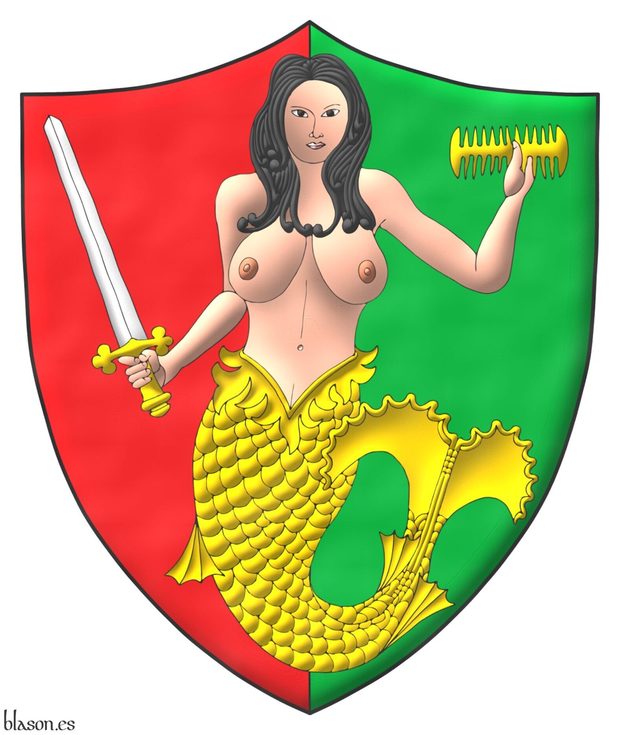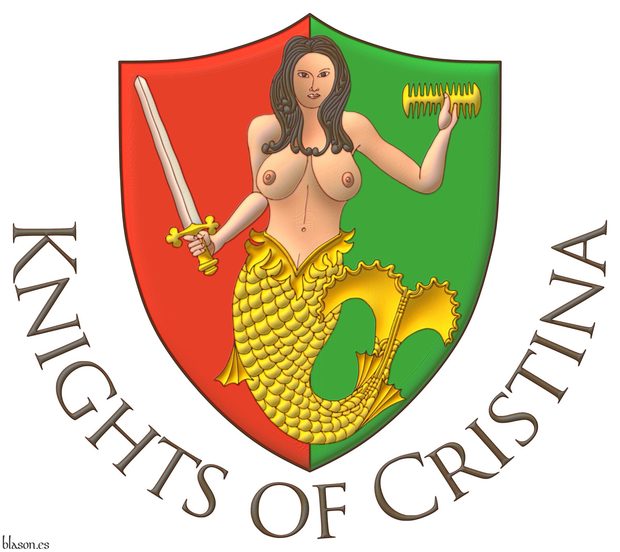
![Ver [Friar, S.; 1987] en referencias bibliográficas. Libro abierto, hojas de plata, filo de oro, guardas de gules, tapas de sable.](../css/Libro.Bibliografia.png)
Friar, S.; 1987
Stephen Friar, «A Dictionary of Heraldry», first edition, illustrated by John Ferguson, Andrew Jamieson, and Anthony Wood, 384 pages, Harmony Books, ISBN.10 0-517-56665-6, New York, 1987.
This book is a comprehensive dictionary that explains the meanings of many heraldic symbols and discusses aspects of the history of heraldry. Stephen Friar, Director of The Society of Heraldic Arts, compiled this work with contributions from renowned heraldic illustrators. It is a valuable resource for anyone interested in heraldry, providing detailed descriptions and illustrations of heraldic terms and symbols.
Bibliographical reference of century XX.
Classification: Dictionary, English language and In color.
The author is Friar, Stephen.
The following articles cite this bibliographic reference:


![Ver [Pineda, Juan d.; 1783] en referencias bibliográficas. Libro abierto, hojas de plata, filo de oro, guardas de gules, tapas de sable.](../css/Libro.Bibliografia.png)
Pineda, Juan d.; 1783
Fray Juan de Pineda, «Libro del Passo Honroso, defendido por el excelente caballero Suero de Quiñones», compiled from an old handwritten book, second edition, 68 pages. printed by Antonio de Sancha, Madrid, 1783.
Fray Juan de Pineda, a Franciscan monk, compiled and abbreviated the original work by [Rodríguez de Lena, P.; Century XVI], in this edition, which is printed in a double-column format.
The book begins with the title «Comiénzase el libro del Passo Honroso: abreviado por fr. Juan de Pineda», which refers to the original work by Rodríguez de Lena. The main text recounts the heroic acts of Suero de Quiñones and his companions, detailing their 30-day defense of the Órbigo bridge against all challengers.
The book includes the full list of the 10 defenders, or maintainers, on page 67, and the 68 conquerors, or adventurers, on pages 67 and 68, and reports the results of the jousts for all of them.
Bibliographical reference of century XVIII.
Classification: Castilian language and In black and white.
Author: Pineda, Juan de.
The following article cites this bibliographic reference:
External link:
Internal resources: PinedaJ1783.PassoHonroso.pdf PDF Format.

![Ver [Durasov, V. A.; 1906] en referencias bibliográficas. Libro abierto, hojas de plata, filo de oro, guardas de gules, tapas de sable.](../css/Libro.Bibliografia.png)
Durasov, V. A.; 1906
Vladimir Alexandrovich Durasov, «Heráldica de la Nobleza de toda Rusia», 279 páginas, San Petersburgo, 1906.
Descripción
Esta obra, escrita por V. A. Durasov, es un registro heráldico completo de la nobleza rusa. Proporciona ilustraciones de los escudos de armas de las familias nobles a lo largo del Imperio Ruso.
El nombre completo del autor es Vladimir Alexandrovich Durasov, aunque en algunas fuentes, especialmente en versiones traducidas o abreviadas, puede aparecer como «W. Durasov» debido a problemas comunes de transliteración del ruso al alfabeto latino.
La obra se cita comúnmente como publicada en 1906, según se indica al inicio del libro; sin embargo, la fecha en la última página del libro es 1907.
Bibliographical reference of century XX.
Classification: Armorial roll, Russian language and Black and white with color plates.
Author: Durasov, Vladimir Alexandrovich.
Internal resources: DurasovVA1906.HeraldicaNoblezaRusa.pdf Formato PDF.


![Ver [The Heraldry Society; 2016] en referencias bibliográficas. Libro abierto, hojas de plata, filo de oro, guardas de gules, tapas de sable.](../css/Libro.Bibliografia.png)
The Heraldry Society; 2016
The Heraldry Society, «HeraldryForBeginners: Beasts, Banners and Badges», Baldock, Hertfordshire, 2016.
Bibliographical reference of century XXI.
Classification: In color.
The author is The Heraldry Society.
External resource:
Internal resources: TheHeraldrySociety2016.HeraldryForBeginners.pdf.


![Ver [The Heraldry Society; 2018] en referencias bibliográficas. Libro abierto, hojas de plata, filo de oro, guardas de gules, tapas de sable.](../css/Libro.Bibliografia.png)
The Heraldry Society; 2018
The Heraldry Society, «Historic Heraldry Handbook», Baldock, Hertfordshire, 2018.
Bibliographical reference of century XXI.
Classification: In color.
The author is The Heraldry Society.
External resource:
Internal resources: TheHeraldrySociety2018.HistoricHeraldryHandbook.pdf.


![Ver [Bravo Guarida, C.; 1934] en referencias bibliográficas. Libro abierto, hojas de plata, filo de oro, guardas de gules, tapas de sable.](../css/Libro.Bibliografia.png)
Bravo Guarida, C.; 1934
Clemente Bravo Guarida, «El Paso Honroso de Don Suero de Quiñones: Célebre Caballero Leonés en el Puente de Órbigo, en 1434», second edition, published by «El Diario de León» to commemorate the fifth centenary of this famous feat of arms, 59 pages, printed by Imprenta Católica, León, 1934.
This edition, written by Clemente Bravo Guarida, provides an updated account of the famous «Passo Honroso», [Rodríguez de Lena, P.; Century XVI], undertaken by the renowned knight Suero de Quiñones in 1434 at the bridge of Órbigo.
The book includes the full list of the 10 maintainers on page 57, and the 68 challengers, or adventurers, on pages 67 and 68. It also reports the results of the jousts for all participants.
Please note a correction: on page 58, where it reads «Loque de la Torre, corrió 6, rompió 4» it should instead say «Lope de la Torre, corrió 6, rompió 4».
Bibliographical reference of century XX.
Classification: Castilian language and In black and white.
The author is Bravo Guarida, Clemente.
Bibliographical reference mentioned in the following article:
Internal resources: BravoGuaridaC1934.PasoHonroso.Ocr.pdf.


Cristina, The Knights of

Party per pale Gules and Vert; overall a mermaid proper, holding in her dexter a sword Argent, hilted Or, and in her sinister a comb Or.
Escudo partido de gules y sinople; brochante sobre la partición una sirena al natural, teniendo en su diestra una espada de plata, guarnecida de oro, y en su siniestra un peine de oro.
Coat of arms designed by me, highlighted with lights and shadows, contoured in Sable, and with a watercolor finishing.
Coat of arms of The Knights of Cristina designed under her directions and emblazoned by me.
Blazon keywords: Gules, Vert, Argent, Or, One, Party per pale, Overall, Mermaid, Proper, Grasping, Dexter, Sword, Hilted, Sinister and Comb.
Style keywords: Outlined in sable, Illuminated and Watercolor.
Classification: Imaginary, Created, Boa and Coat of arms.
Imaginary bearer: Cristina, The Knights of.


The Knights of Cristina

Party per pale Gules and Vert; overall a mermaid proper, holding in her dexter a sword Argent, hilted Or, and in her sinister a comb Or. Motto: «Knights of Cristina».
Escudo partido de gules y sinople; brochante sobre la partición una sirena al natural, teniendo en su diestra una espada de plata, guarnecida de oro, y en su siniestra un peine de oro. Divisa: «Knights of Cristina».
Coat of arms designed by me, highlighted with lights and shadows, contoured in Sable, and with a forge finish.
Blazon keywords: Gules, Vert, Argent, Or, One, Party per pale, Overall, Mermaid, Proper, Grasping, Dexter, Sword, Hilted, Sinister, Comb and Motto.
Style keywords: Outlined in sable, Illuminated and Forge.
Classification: Imaginary, Created, Boa and Coat of arms.
Imaginary bearer: Cristina, The Knights of.

Continue with: Badge of The Knights of Cristina.
-
Language
-
Categories of heraldry
-
Divisions of the field
- Without divisions
- Party per pale
- Party per fess
- Party per bend
- Party per bend sinister
- Tierce
- Tierce sinister
- Tierced per pale
- Tierced per fess
- Tierced per bend
- Tierced pallwise inverted
- Quarterly
- Quarterly per saltire
- Gyronny
- Party per fess, the chief per pale
- Party per pale, the sinister per fess
- Party per fess, the base per pale
- Party per pale, the dexter per fess
- Chapé
- Chaussé
- Embrassé
- Contre-embrassé
- Party per chevron
- Enté
- Enté en point
- Flanched
-
Metals
-
Colours
-
Furs
-
Other tinctures
-
Ordinaries and sub-ordinaries
-
Diminutives of the ordinaries
-
Other charges
-
Charges from Nature
Water, Eagle, Bald eagle, Eagle claw, Dorsal fin, Tail fin, Two hands clasped, Lark, Tree, Trunk, Rainbow, Atom, Barbel, Acorn, Bighorn sheep, Arm, Owl, Vulture, Horse, Head, Goat, Camellia, Thistle, Merino ram, Kapok tree, Stag, Doe, Crescent, Increscent, Chrysanthemum, Tail, Tail addorsed, Ermine spot, Hummingbird, Snowflake, Heart, Roe deer, Neck, Stags' attires, Roe deers' attires, Raven, Dolphin, Diamond, Tooth, Elephant, Trunk (elephant), Beetle, Emerald, Starling, Mullet, Mullet of four points, Star of David, Estoile, Male figure, Fleur de lis, Flower, Cornflower, Dogwood flower, Lotus flower, Hop cone, Bluebonnet, Puffin, Ash, Rooster, Claw, Talon, Goose, Heron, Seagull, Pomegranate, Sunflower, Swallow-tail, Falcon, Leaf, Boar, Goldfinch, Laurel, Barn owl, Lion, Lioness, Lion passant, Leopard, Lion rampant guardant, Lynx, Lily, Madonna lily, Flame, Wolf, She-wolf, Parrot, Moon, Hand, Apple, Apple tree, Sea, Martlet, Wing, Two wings in vol, Covert, Blackbird, Mount, Trimount, Fly, Wrist, Elm, Olive tree, Orbital, Bear, Palm frond, Palm tree, Dove, Poplar leaf, Panther, Jaguar, Vine, Paw, Forepaw, Foot (palmiped), Foreleg, Peacock, Chest, Pelican, Pelican in her piety, Dog, Brach hound, Warren hound, Fish, Hoof, Beak, Feather, Ostrich feather, Cinquefoil, Quetzal, Branch, Sprig, Frog, Shamrock, Caboshed, Oak, Holm oak, Rose, Double rose, Savage, Serpent, Plough of Ursa Major, Sun, Sun in splendour, Ray of the sun, Lightning flash, River, Stem, Badger, Tyger, Linden, Wheat, Wheat spike, Bull, Tulip, Udder, Escallop and Fox.
-
Artificial charges
Halberd, Plough share, Ace of spades, Anchor, Cyclamor, Torch, Bow, Arch, Harp, Non-classic artifact, Winnowing fan, Crozier, Conductor's baton, Pair of scales, Ship, Oar, Sail, Norman ship, Beret, Grenade, Ecclesiastical cap, Arm vambraced, Knight, Chain, Cup, Covered cup, Monstrance, Bell, Bell tower, Cannon, Cannon dismounted, Cannon port, Carbuncle, Castle, Ribbon, Clarion, Nail, Crucible, Cord, Dagger, Key ward, Turret, With a turret, Armillary sphere, Sword, Federschwert, Sabre, Parchment, Scroll, Skirt, Arrow, Club, Garb, Sheaf of tobacco, Scythe, Gauntlet, Axe, Buckle, Galician granary, Host, Bonfire, Polish winged hussar, Church, Fanon, Oil lamp, Spear, Spear's head, Fleam, Letter, Book, Open book, Closed book, Bookmark, Page, Line, Lantern, Key, Four crescents joined millsailwise, Hammer, Two-handed sword, Menorah, Mortar, Pestle, Number, Knot, Celtic Trinity knot, Water-bouget, Comb, Piano, Millstone, Millrind, Millwheel, Quill, Clay pot, Potent, Bridge, Cuffed, Hourglass, Chess rooks, Compass rose, Rosette of acanthus leaves, Mullet of six points pierced, Broken, Portcullis, Wheel, Wagon-wheel, Symbol, Sackbut, Drum, Geometric solid, Tetrahedron, Tower, Trident, Trumpet, Double vajra and Anvil.
-
Immaterial charges
Angel, Archangel, Basilisk, Heart enflamed, Sacred Heart of Jesus, Paschal lamb, Dragon's head, Dragon, Wyvern, Phoenix, Garuda, Griffin, Sea-griffin, Winged hand, Our Lady of Mercy, Pegasus, Saint George, Mermaid, Trinity, Triton, Golden fleece, Unicorn and Ouroboros.
-
External elements
-
Heraldic creations
-
References
-
Formats
-
Keywords on this page
Watercolor, Proper, Armorial roll, Bibliography, Boa, Overall, Created, Cristina, The Knights of, Outlined in sable, Dictionary, Dexter, In black and white, Black and white with color plates, In color, Coat of arms, Sword, Forge, Hilted, Gules, Illuminated, Imaginary, Badge, Motto, Castilian language, English language, Russian language, Or, Party per pale, Comb, Argent, Rough, Century XVIII, Century XX, Century XXI, Sinister, Vert, Mermaid, Grasping and One.